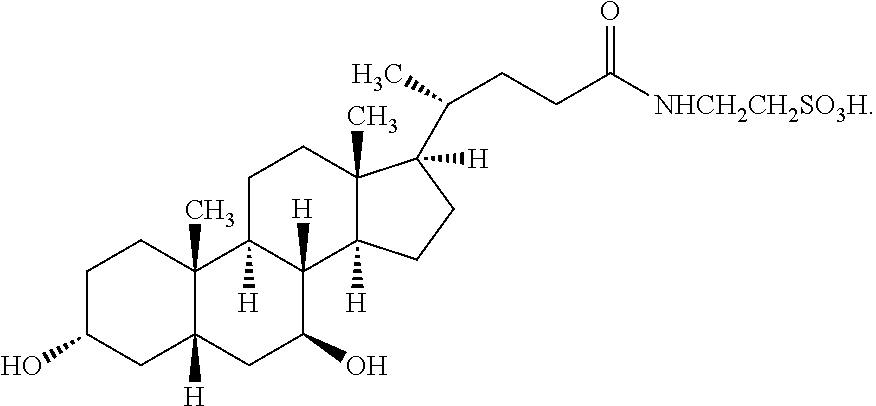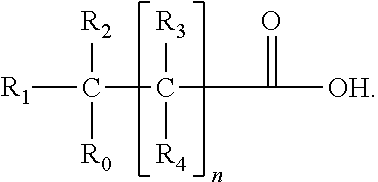Modulating endoplasmic reticulum stress in the treatment of tuberous sclerosis
a technology of endoplasmic reticulum and tuberous sclerosis, which is applied in the field of modulating endoplasmic reticulum stress in the treatment of tuberous sclerosis, can solve the problems of severe er stress, achieve the effects of reducing or preventing er stress, increasing the expression of er chaperones, and reducing the production of mutants
- Summary
- Abstract
- Description
- Claims
- Application Information
AI Technical Summary
Benefits of technology
Problems solved by technology
Method used
Image
Examples
example 1
Biochemical Reagents
[0090]Anti-IRS-1 and anti-IRS-2 antibodies were obtained from Upstate Biotechnology (Charlottesville, Va.). Antibodies against phosphotyrosine, eIF2α, JNK-1, and insulin receptor β subunit were from Santa Cruz Biotechnology (Santa Cruz, Calif.). Anti-phospho S6K, anti-S6K1, anti-phospho-PERK, antiphospho-eIF2α, anti-Akt and anti-phospho-Akt antibodies, and c-Jun recombinant protein were from Cell Signaling Technology (Beverly, Mass.). Fluorescein-conjugated (FITC-conjugated) goat anti-rabbit IgG were from Jackson Immuno Research Laboratories (West Grove, Pa.). Thapsigargin was from Calbiochem (San Diego, Calif.). Cell Death Elisa Kit and BM Chemiluminescence Blotting Substrate (POD) were from Roche (Indianapolis, Ind.). The antiphospho-IRE-1 antibody was a gift from Dr. Fumihiko Urano from University of Massachusetts
example 2
Analysis of ER Stress Parameters
[0091]All of the mouse embryonic fibroblast (MEF) cell lines (TSC1+ / +, TSC1− / −, TSC2+ / +, TSC2− / −) were cultured in medium containing DMEM-H+10% fetal bovine serum (FBS)+1% PS (penicillin-streptomycin complex) in 175 cm2 cell culture flasks using standard methods. Upon reaching 90% confluency, cells were split into 10 cm dishes at 30-40% confluency and grown again in DMEM-H+10% FBS+1% PS to about 60% confluency for experiments.
[0092]At the start of the experiment, cells were placed in fresh media and treated with 200 nM Rapamycin or 10 mM PSA, and DMSO or PBS as respective vehicle controls (PBA was dissolved in PBS, and rapamycin was dissolved in DMSO), for 19 hours. As a vehicle control, DMSO was not present at a sufficiently high concentration to act as a chemical chaperone. Cells were then washed 3 times with serum-free DMEM-H+1% PS and incubated for 5 hours in serum free DMEM-H+1% PS in the presence of rapamycin or PBA and their appropriate vehicle...
example 3
Western Blotting
[0094]Protein concentrations were normalized and the desired amounts were aliquotted into tubes. Laemelli buffer was added to a 1× final concentration and the samples were boiled for five minutes. After boiling, the samples were incubated at room temperature for 20 minutes. The boiled, cooled lysates were centrifuged at 14,000 rpm and subject to SDS-PAGE. Proteins were transferred to PVDF membranes for western blotting.
[0095]Membrane blotting was performed using standard techniques and reagents. Appropriate modification depending on the antibodies used and other considerations, is within the ability of those skilled in the art. Membranes were blocked in 10% blocking reagent for 1 hour prior to exposure to primary antibody in tris-buffered saline-tween (TBST), pH 7.4, overnight at 4° C. Following overnight incubation, membranes were washed in TBST for 3×20 minutes and placed into secondary antibody for 1 hour. Subsequently the membrane was washed 3×20 minutes in TBST....
PUM
| Property | Measurement | Unit |
|---|---|---|
| pH | aaaaa | aaaaa |
| ER stress | aaaaa | aaaaa |
| pharmaceutical composition | aaaaa | aaaaa |
Abstract
Description
Claims
Application Information
 Login to View More
Login to View More - R&D
- Intellectual Property
- Life Sciences
- Materials
- Tech Scout
- Unparalleled Data Quality
- Higher Quality Content
- 60% Fewer Hallucinations
Browse by: Latest US Patents, China's latest patents, Technical Efficacy Thesaurus, Application Domain, Technology Topic, Popular Technical Reports.
© 2025 PatSnap. All rights reserved.Legal|Privacy policy|Modern Slavery Act Transparency Statement|Sitemap|About US| Contact US: help@patsnap.com



